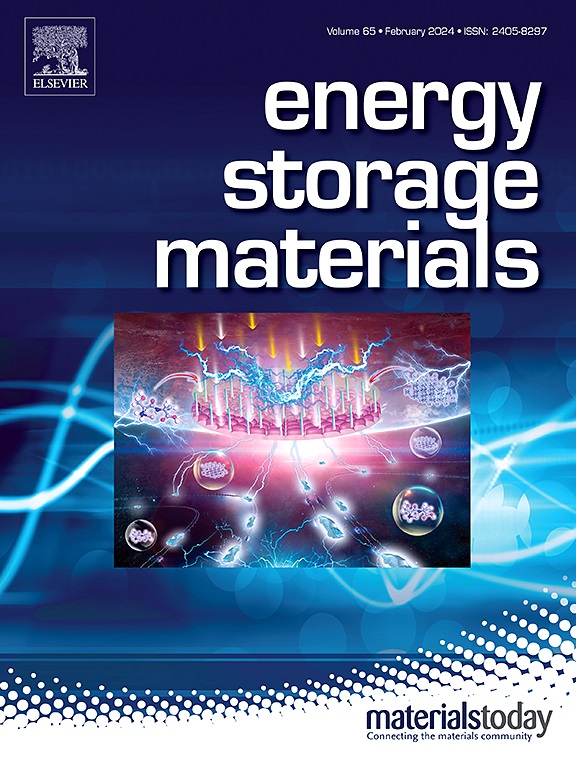AlF3-Stabilized Cathode Electrolyte Interphase with Superior PF6- Affinity and PF6- -Transferred Characteristics for Dual-Ion Batteries
IF 18.9
1区 材料科学
Q1 CHEMISTRY, PHYSICAL
引用次数: 0
Abstract
High-voltage and high-power dual-ion batteries (DIBs) face significant challenges due to the severe oxidative decomposition of the electrolyte and pronounced structural degradation of the graphite cathode. In this context, we introduce Al2O3 as a surface modifier, which facilitates the establishment of a stabilized cathode electrolyte interphase (CEI). Al2O3 functions as a protective coating and engages in a chemical reaction with the corrosive HF to produce AlF3, thereby alleviating HF-induced degradation of the graphite cathode. Furthermore, the resulting AlF3 layer preferentially adsorbs PF6- anions, thereby promoting their rapid transfer and aiding in the formation of a LiF-rich, stable CEI. This interphase substantially mitigates both the structural deterioration of graphite and the decomposition of the electrolyte. Consequently, the Al2O3-modified graphite cathode (A-Gr) exhibits exceptional rate performance and long-term cycling stability, retaining 78% of its initial capacity after 3500 cycles. This research presents an effective surface modification strategy that enhances electrode performance through interfacial chemistry engineering, providing a promising approach for advancing next-generation, durable energy storage systems.

双离子电池中具有优异PF6亲和力和转移特性的alf3稳定阴极电解质界面
高压大功率双离子电池(dib)由于电解液严重氧化分解和石墨阴极明显的结构降解而面临重大挑战。在此背景下,我们引入了Al2O3作为表面改性剂,促进了稳定阴极电解质界面(CEI)的建立。Al2O3作为保护涂层,与具有腐蚀性的HF发生化学反应生成AlF3,从而减轻HF引起的石墨阴极降解。此外,所得到的AlF3层优先吸附PF6-阴离子,从而促进它们的快速转移,并有助于形成富liff、稳定的CEI。这种界面相大大减轻了石墨的结构恶化和电解质的分解。因此,al2o3修饰的石墨阴极(A-Gr)表现出优异的速率性能和长期循环稳定性,在3500次循环后保持了78%的初始容量。本研究提出了一种有效的表面改性策略,通过界面化学工程提高电极性能,为推进下一代耐用储能系统提供了一种有前途的方法。
本文章由计算机程序翻译,如有差异,请以英文原文为准。
求助全文
约1分钟内获得全文
求助全文
来源期刊

Energy Storage Materials
Materials Science-General Materials Science
CiteScore
33.00
自引率
5.90%
发文量
652
审稿时长
27 days
期刊介绍:
Energy Storage Materials is a global interdisciplinary journal dedicated to sharing scientific and technological advancements in materials and devices for advanced energy storage and related energy conversion, such as in metal-O2 batteries. The journal features comprehensive research articles, including full papers and short communications, as well as authoritative feature articles and reviews by leading experts in the field.
Energy Storage Materials covers a wide range of topics, including the synthesis, fabrication, structure, properties, performance, and technological applications of energy storage materials. Additionally, the journal explores strategies, policies, and developments in the field of energy storage materials and devices for sustainable energy.
Published papers are selected based on their scientific and technological significance, their ability to provide valuable new knowledge, and their relevance to the international research community.
 求助内容:
求助内容: 应助结果提醒方式:
应助结果提醒方式:


